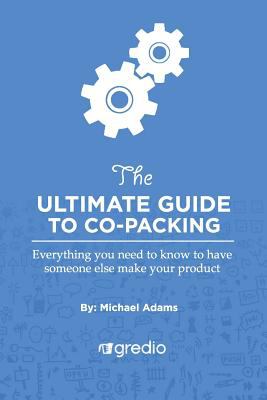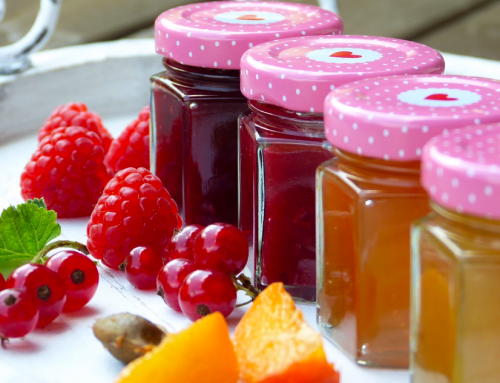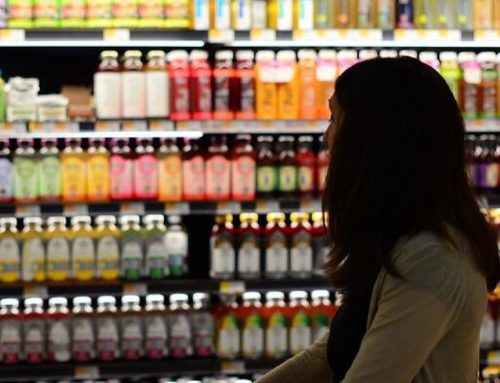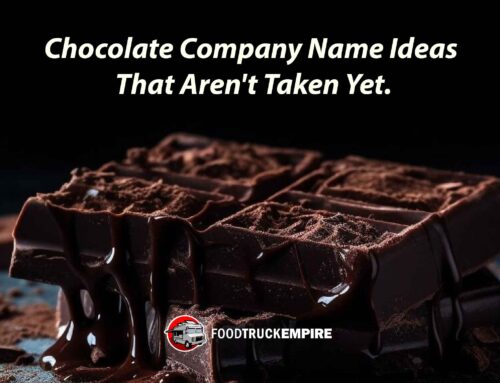Finding the best co-packer for the job is tough.
There’s so many factors at play: space, time, money, capabilities, current kitchen tenants etc. Everything should influence your decision. Why? Because when and if you have to switch copackers, it costs a lot of money and time to move everything over.
This section helps you make the right decision the first time.
Below, you’ll find a list of things to consider as you tour different kitchens, meet kitchen managers, talk with current producers, and assess the company. This is by no means an exhaustive list, but gives you a great starting point.
Before we get too far into this extensive guide, I wanted to let you know this is just one part of The Complete Guide to Profitable Co-Packing. Check out the step-by-step guide if you’re thinking about working with a co-packer to scale food production.
12 Things to Consider When Selecting a Co-Packer
1. Size of the facility
How big is the kitchen? Is there enough room for you to produce? And don’t forget: take into account any space you’ll need should you have to bring in a specific piece of equipment to produce your product. I’ve produced in 700 square foot kitchens and 7,000 square foot kitchens. Both have met my needs, but the smaller space has met my needs better.
Think storage space, too.
You’ve got to keep everything stored there (or truck it in and out for each production). And by everything, I mean raw materials/ingredients, all of your packaging (glass jars, plastic caps, labels, boxes, hang tags, etc), and if you ship out of the facility, your finished goods will also need a pallet to stay on.
You’re not the only producer.
There may be a number of producers who already lay claim to much of the space. The question you (and the production manager) have to answer is, “is there enough room for your company to move in?” Large kitchens (3,000 square feet and up) tend to have space for a certain number of manufacturers. If you don’t get a meeting with a co-packer, it could be because they’re at capacity in their facility.
2. Number of employees
A typical copacker is made up of 35 employees. I explain who below, but bring it up as a concern because you may need more than one person to help copack for you. In my experience, it’s taken a team of 3 people to make 80 gallons of mustard sometimes 4 or 5 if the facility is under a time crunch.
Does the kitchen you’re looking at have enough employees?
It’s something to consider. Are you going to hop in and help if something goes wrong? I’ve helped on several productions because it’s my company on the line. We needed product to meet large purchase orders. As a small producer, you hope for enough team members, but sometimes it doesn’t happen.
Ask about part-time help.
Does the copacker you’re looking at bring in help when they need it or are you responsible for finding extra help. One copacker I know has an army of parttime workers who are called on when she needs help the most. All of them are great people willing to lend a hand. Truth is, the kitchen manager isn’t going to always be the only one handling your product. That means you should meet as many people as possible when you go for a tour.
Now, on to who typically makes up a co-packer’s staff:
General Manager: This is the person who runs the show. They were likely instrumental in getting funding to open the facility. They know if you’ll fit in the schedule. And they have a general outlook on the industry.
Kitchen Manager: Sometimes the same person as the General Manager. The Kitchen Manager is the one who oversees and participates in all of the productions, 5 days a week. They know how to make every product, how much product they can make in an 8 hour day and if you’ll be able to produce your product on the equipment currently in the kitchen. It’s also likely this person is ServSafe certified (mandatory for third party certified kitchens more on that later in the list).
Food Scientist: These guys are the brains behind the operation. They know everything there is to know about food processing from pH to fill temperature, acidified foods, to scaling recipes. They’re knowledge is indispensable. Make sure someone knows something about food science at the copacking facility.
12 production assistants: Need help weighing out ingredients, filling or labeling product? These people handle all the nitty gritty at the facility even washing the dishes. As mentioned above, there may be more than 2 of these people because they rotate in and out.
Small Business Advisors (optional): One of the leading shared kitchen & co-packing incubators in Vermont has a small business development liaison’s office in the building. This is super helpful to producers because now they have business planning and consulting (free, I might add) at their disposal. While this is likely to not be a position in many copacking facilities, business management cannot be overlooked.
3. Production capability
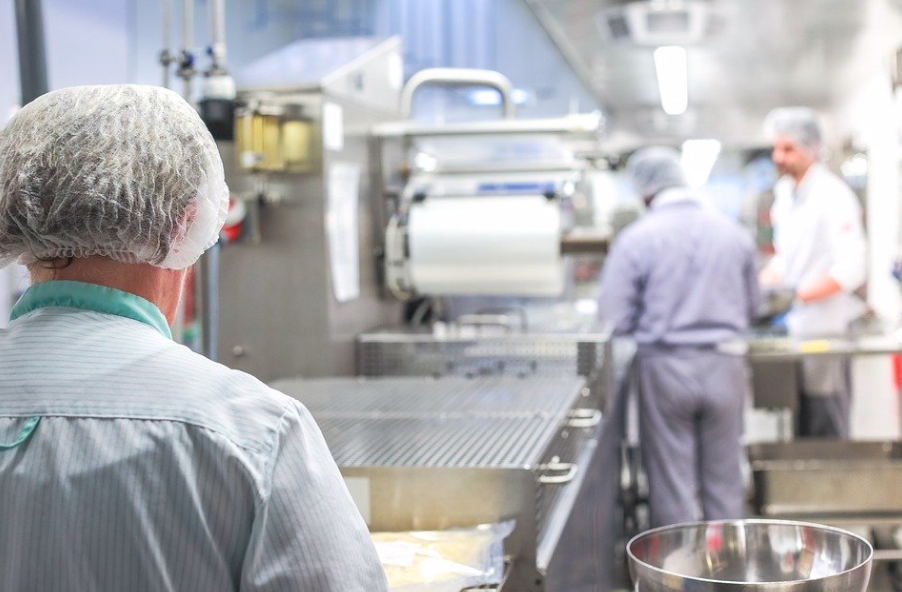
Understand the food production capabilities of your co-packer being inking a deal.
How many units can the facility pump out in a day? Would they have to produce every day to meet your demand? If they do, it’s not a good fit. But, make sure they can produce on a regular schedule. The last you want is to be stuck with no product and purchase orders out your ears with no available kitchen time.
Plus, look at what equipment they have.
Do you need to furnish any special equipment to produce your product? Or, does the kitchen have everything you could ever dream of? Make sure to ask specific questions about equipment. And if they don’t something you need, see if you need to buy it outright or if the facility would be willing to purchase one for you if you sign a yearlong contract. (More on that in the pricing section later).
Production capacity is important because you may be growing, too. What starts out as 50 cases of product a month may double or triple (like it did for me). That means you need to find a facility that can grow with you not just one for your current needs. Keep that in mind.
4. Distance from your home
Pretty sure you don’t want to drive hours to your copacking space. That would be crazy on so many fronts.
That means, you need to take proximity into account.
Find a kitchen that’s close by. Otherwise you’ll feel like all you do is drive back and forth wasting both time and money. Two resources that are limited, right?
On a personal note, we used to drive an hour each way to our first co-packer.I chose to drop or ship all of my ingredients (to avoid a fee you’ll learn more about later). Sometimes, that meant driving back and forth 23 days a week. That ate up a lot of time I could have used to sell more product.
Currently, we’re 15 minutes from our co-packer.It’s made all the difference. I can coordinate more local deliveries of perishable product, if there’s an emergency, it’s easier for me to fix it, and well, the most obvious advantage being that my product is closer to me if I need it.
For some of you, you may have to drive long distances. On the plus side, the gas can be written off as a business expense, but don’t you want to be able to have time to build your company? Then travel distance should be taken into account when selecting a co-packer.
5. Receiving capability
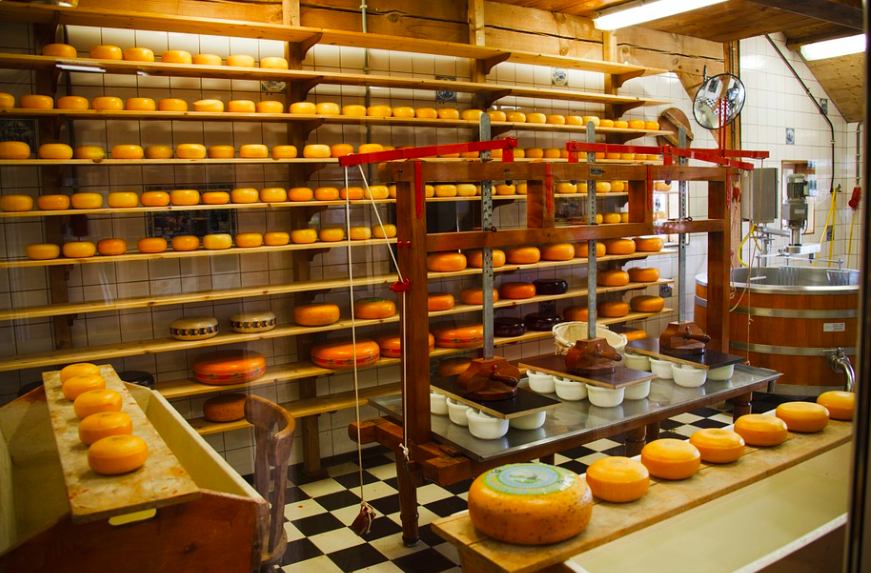
How does your vendor accept raw materials?
Your ingredients, labels, and packaging have to make it to the kitchen, right? Figuring out how that happens is important when you’re selecting a co-packer. Here’s a couple receiving tips/questions to keep in mind:
Is someone always there?
Not only do you frustrate the UPS delivery man when no one is at your copacker, but it’s frustrating for you, too. Make sure you know when and where to have deliveries dropped off. Why so important? Think about this: if you have refrigerated or frozen product being delivered, it has to stay at a certain temperature. Your butter or eggs can’t be left outside in the summer that would just cost you a ton of money.
Do they have a forklift?
This is going to be kitchen dependent. If the kitchen is less than 3,000 sq ft, it’s likely there’s no room for a forklift. But, if you’re getting a pallet of allpurpose flour delivered, you probably don’t want to move it bag by bag. That’s why a forklift comes in handy. You can transport product from one end of the kitchen to the other.
Is there a loading dock?
Chances are you’re going to have to bring in a lot more raw materials than at your previous kitchen. That makes a loading dock handy. Large semitrucks can pull up to the receiving area and simply slide a pallet off their truck. Without a loading dock, you have to request a liftgate from the trucking company and there’s an extra fee for the liftgate.
But, it makes your new copacker super happy when they don’t have to climb onto the truck to disassemble a pallet with over 300 cases of glass jars (Yep I’ve been there!). Bottom line: Get a liftgate on the delivery truck or ask if there’s a loading dock at your copacking kitchen.
How do deliveries work?
Many copackers are logistical nightmares. There’s deliveries coming in daily, product being made daily, and employees needed to handle large dropoffs. That’s why it’s smart to learn how deliveries work at the copacker. Can they only come on certain days? Are there weight restrictions? And what about deliveries that take up all of your storage space?
It’s best to iron out these details before you sign anything. That way you know exactly what you’re getting into. For example, at my current co-packer it requires a little more leg work, but I don’t pay a premium for it because I’m doing the extra work even with deliveries.
It’s important though you’ll be sending materials to the kitchen all the time. It’s best to know how it works.
6. Pricing structure
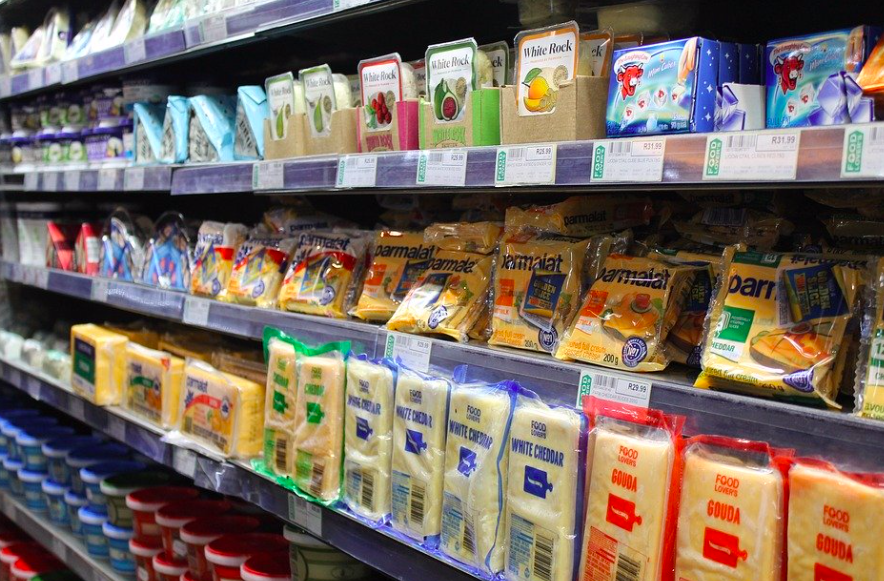
Figuring out your packing costs is more complex than you might think.
This is its own section later in the guide, but I’ll give you the quick version now. Co-packing pricing can be some of the most confusing pricing you’ll ever see. It’s not as simple as a flat fee you pay every month. It gets much crazier.
How co-packers price their service
There are two main ways copackers price. The first way is a flat dayrate. It could be anywhere from a couple hundred bucks all the way up to $1,000 or more. This is the way I started out at my first copacker. I paid a dayrate. That forced me to crank out as many units as I could on each day. Why? Because the more units I produced, the lower my labor rate was. It’s the only cost factor I could leverage.
The other way to charge is a per unit price. This is often figured out after you and copacker meet to go over how your product is produced, how many people it takes, is there downtime, do things sit overnight, etc. Based on time involved (including prep), your unit price may fluctuate as I’ll discuss later. Per unit pricing is nice because you can predict your unit costs more accurately.
Where many co-packers get you
There are all sorts of fees when you start to work with copackers. Everything from receiving fees to consulting and storage. Again, these are listed out later in the guide.
Work through your numbers early
Whatever pricing gets handed to you when you engage with a copacker, make sure you work through the numbers to see if you’re still going to make money. You do want to make money, right? If you’re going to be producing a guaranteed amount, you may want to look into contracting so that you get a flat rate throughout the year. It’s not only about the price of your product when it leaves the warehouse, but it also means your profit margins throughout the distribution channel.
7. Owner & employee personality

Get a sense of the personality of folks you’ll be working with directly. You’ll be in frequent communication.
If I had to highlight an item on this list with stars and big giant arrows, it’s this one. You have got to get along with your copacker. They’re basically married to you. You spend time with them, you have hard conversations, and you are in constant communication. You’ve got to be nice to them, just like they have to be nice to you or things get rocky.
And, I know sometimes, you won’t know someone’s true colors until a few months (or maybe years) down the road. It’s hard to gauge someone’s personality from an hourlong meeting. That’s why you should make sure you could work with this person.
Let me tell you a quick story:
My first co-packer started out as a great relationship. She was nice, attentive, and got the job done (albeit at a pricey rate). But, months in, my phone calls weren’t being returned, errors were being made in production (costing me more money), and I felt pushed aside for larger contracts they were dealing with.
Lesson learned? Make sure you’d jump in front of a bus for your co-packer. They have your baby, your recipes, in their hands. Make sure it’s someone you mesh with, you trust and you can openly communicate with. Funny, sounds a little bit like marriage, doesn’t it?
8. Shipping capability
Producing a lot of product means you’re moving a lot of product, too. And that means your copacker has to keep up with what’s being shipped where. Some copackers take care of your finished product leaving the kitchen other’s don’t. Why is this important?
You may need a pallet moved, an online order packed up, or a couple cases shipped off to a regional retailer. Find out if your copacker does this. If they do, it’s likely going to cost you either per shipment, case, or unit. The alternative, however, is you picking up all the product and shipping it yourself tons of time so figure out if it’s worth it or not for you.
What do I do?
I pick up all of my manufactured product and store it in my basement. I use my copacker as a pickup location for distributors. I take care of direct orders, online shipments, and events and festivals. Plus, I know how much of each variety I have onhand.
9. Third party certifications (and health inspections)
The last thing you want to do is produce your product in a kitchen that isn’t up to code or worse it’s just plain dirty. Check for cleanliness and other health records showing your potential facility has been cleaned. And while you’re at it, check for other certifications.
There are tons of health and allergenrelated permits and certifications. From glutenfree to kosher and organic, the list is endless. And you want to find out if your co-packer is certified.
But, be careful. Some facilities may call themselves gluten free and not be certified. That means you can’t put gluten free on your label. It has to be from a certified facility. But, more on that later we’re getting off topic.
These certifications make it so that many companies are able to lay claim to the many “free statements.” But the certifications don’t end there.
Your facility also has to abide by state and FDA guidelines. For example, in Vermont, the department of health requires every manufacturer (not just the kitchen) be certified. That means the local health inspector needs to see your production process and make sure the facility is in tiptop shape. And your copacker is going to have you fit the bill because it’s a lot of time and money to get ready for inspections. Time your co-packer could be using to make someone else’s product.
Another reason you want to check up on thirdparty audits and certifications is it may depend on your company’s growth. Whole Foods, one of the major grocery store chains requires your product be produced in a thirdparty certified kitchen. No certification? No Whole Foods.
Make sure the kitchen has proof of certification before you move forward yes, it’s that important!
10. Other customer experiences

What do other food entrepreneurs say about the co-packer you’re considering?
Let’s say you just moved to town and you’re looking for the best pizza around. What would you do? Check online? Find Yelp reviews? Or, would you ask your trusting friends and family?
The testimonial and experience of others probably heavily influences your decision of where to grab the best pizza ever. Because your friends know the good hangouts and the places to avoid.
The same is true with copackers. You’ll learn a lot about the kitchen from the companies that already produce their products there. But, how do you find out who produces there? Just ask.
See if your copacker will give you contact information to other manufacturers. Ask how long they’ve been producing there and see if you could get in touch with them. And what should you ask them? Here are a couple questions to ask:
1. Have you had any challenges with co-packing?
Food producers are honest people. They’ll tell you if it’s been challenging copacking. Sure, it may change your opinion or co-packing, but what better way to find out about copacking than asking people who already do it?
2. What’s it like working with the kitchen manager?
Again, honesty here is great, too. Kitchen managers are typically one or the other good or bad. Other producers will let you know which one their manager is. And hopefully it’s good. Keep in mind, the kitchen manager may only give you success stories not other producers who may give you the honest truth. Get to know them through other people and then make your own decision.
3. Would you change anything about the facility?
No copacker is perfect there’s flaws in every facility. Talk to other producers to find out what your potential copacker’s weaknesses are. Maybe it’s hard to make deliveries or schedule a production. Producers will tell you what’s wrong the facility (and what they’ll do the
4. Are you able to produce to demand?
You want to know if there are any production bottlenecks, right? And what about producing to meet a spike in sales? What if you have a huge press hit and product is flying out the door? You want to know if your copacker will be able to meet the demand. Other customers will have a good gauge for this based on their own experiences.
Equipment needs: You can expect the majority of co-packers to have the same standard equipment. From a six burner stove to a kettle, kitchen wares to a three -bay sink, there are certain pieces of equipment a commercial kitchen needs. But, lets explore the equipment that would make your copacking experience easier (and cheaper).
Here’s a list of the “nice to haves” in a co-packing kitchen:
Large kettles
You’re not going to be able to produce the product you need with a stock pot or even a 5 gallon tabletop kettle. Copackers should have at least one 40gallon kettle (or two 20 gallon kettles like my current copacker). This allows you to make enough product and justify the additional cost of copacking. After all, you should be moving some serious product if you’re considering copacking.
Commercial Immersion Blender
Definitely kettle’s best friend right here. Stop mixing ingredients with a paddle (those are necessary, too) and pick up a commercial immersion blender from Waring.But, be careful, this thing blends like no other. Oh, and if you don’t want everything coming together (meaning, you still need chunks of something like tomatoes), stick with the good old fashioned paddle.
Side note: another added benefit of commercial blenders? Awesome biceps. It’s pretty heavy so you might want to hit the gym for some arm curls. Ok, I kid, I kid.
Automatic (or pedal powered) Filler dry and wet
I think filling machines are cooler than any home kitchen appliance. They save an incredible amount of time and keep your product’s net fill weight as close to what’s on the label as possible. Gone are the days of hand filling your product. If co-packers don’t have an automatic filler, check for a pedal powered one. All that means is the filler is activated by stepping on a pedal with your foot to fill each jar. This is more likely at smaller co-packers.
Labeling machine (there are tons out there)
I have a confession to make: Our products are still handlabeled. Yes, my copacker is tiny and they haven’t invested in a labeling machine. And yes, that means your copacker should have one. Handlabeling takes forever and sometimes the labels don’t go on straight. While labeling machines aren’t perfect either, they certainly help to speed things up. And when you’re producing over 1,000 units a day, believe me, you want as much automation as possible. Viva la labeler!
Horizontal and/or Vertical Band Sealer
It was like Christmas when this arrived at my house a few years ago. We purchased a horizontal band sealer off eBay for my energy bar company. It helped us package 500 bars a day from our home kitchen. Sure, it broke a few times and requires some black electrical tape, but the seal was great, the small conveyor belt sped things up, and we were cranking. Make sure your copacker has one of these if you’re manufacturing any bagged items that need to be sealed like nuts, granola, cereals, or dry mixes. It will save your life. Guaranteed.
There’s tons more equipment that should make it on to the “nice to haves” list, but we’ve got to move on to answering another question:
11. What if your co-packer doesn’t have the equipment you need?

An olive oil centrifuge is something you won’t find at most co-packing facilities.
While I hope this doesn’t happen to you, you may find copackers in your area don’t have the equipment you need. Don’t panic. It happens all the time. They simply haven’t produced a product like yours. Here are three options to remedy the situation:
1. Have the co-packer purchase the equipment
While unlikely, you might be able to get your copacker to purchase the equipment for you. Why? Because it likely benefits them. They’re able to bring in more producers because they have the equipment.
Plus, it’ll help get your product produced faster. Keep in mind the copacker will likely want to have you sign a yearlong contract before they purchase equipment for you. That way, they know they’ll have a consistent revenue stream from you and be able to justify the added expense.
2. Split the cost with your copacker
I’ve done this one and it’s worked out great. When we switched copackers, the new place didn’t have a commercial immersion blender (see above about why it’s so awesome). I explained the benefits to the kitchen manager and we agreed to split it. Now, it’s used by almost every producer and is a great addition to the kitchen’s equipment line up. This is the best way to go if you don’t have the funds to buy the equipment outright.
3. Finance the equipment yourself
And probably the most popular way to get new equipment in the door, financing equipment yourself is likely to happen at some point. Copackers don’t want to take the risk on you, they might not have the room, and just like you, they may not have the cash flow to split the purchase. Here are a couple tips if you’re looking to finance equipment yourself:
- Shop around look for used equipment at auctions or restaurant equipment stores.
- Test the equipment especially used. You want to know it works before you bring it in.
- Loan options from crowdfunding to bank loans, and credit cards, explore your options.
I’m no banker, but if you can finance a piece of equipment to make your life easier (for you and your co-packer), I’d do it. Worst case scenario is you resell the equipment if it isn’t right for you.
Remember, you don’t have to cut ties with your copacker if they don’t have the equipment you need. Make it work by using some of the strategies above. On to the final point.
12. Scheduling production
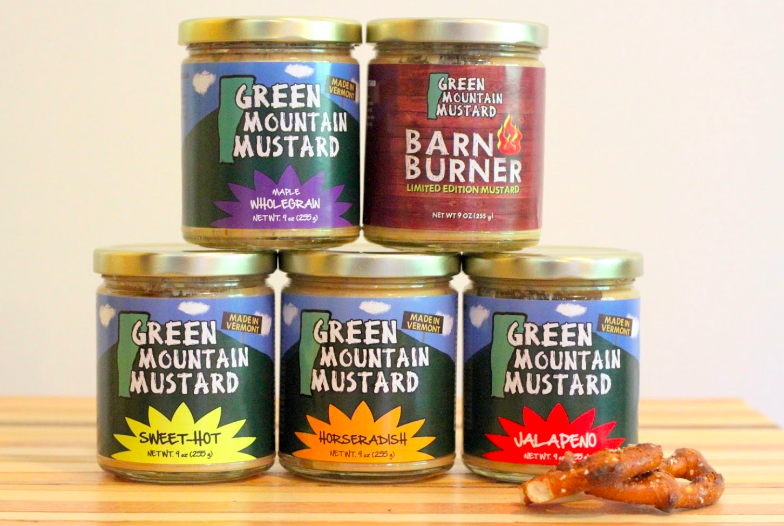
Here’s the gourmet mustard line I had produced at a co-packer.
Wouldn’t it be horrible if you had outstanding purchase orders you couldn’t fill? It’d be even worse if you couldn’t get kitchen time to meet demand, wouldn’t it? Obviously, you can’t plan for every spike in demand, but it’s something to consider when selecting your copacker. Here are a few questions to ask when you meet with your co-packer:
- How many units of my product can you produce in a day?
- How many days in advance should I schedule my productions?
- What happens if I need to change or cancel a production?
- Is there a community calendar to see when there is kitchen time available?
Again, while it’s not an exhaustive list, it’s important to know how copackers run their kitchens. The last thing you want to have happen is have no kitchen time in the middle of your busy season. That means plan ahead.
Tip: Look at your previous year’s sales. Forecast an increase and schedule more productions when you’re at your peak.
Just like buying a house, the requirements list to select a copacker is daunting (and to think this isn’t an endallbeall list).
Also, don’t pick the first copacking kitchen you tour. There could be better kitchens that suit your company’s needs. For example, I should have looked further before choosing my first co-packer. She ended up far too large for us. That mistake cost us several thousand dollars.
Don’t make the same mistake I did.
I’ve seen many food businesses crash and burn because of strained co-packer relationships. Their product isn’t the same, quality drops, and you not only have an upset producer, you have a frustrated co-packer not a good mix, my friend, not a good mix.
Credibility of your co-packer is more important than price. You’re marrying your co-packer. The only difference? There’s no ring. But there’s months of planning, people to talk to, and of course you want the event to go off without a hitch.
How do I know my co-packer is credible?
Credibility is something you want in your bank, your contractor, your life insurance provider, and your accountant. But, you also want your copacker to be credible. It’s not just a oneoff relationship. You are likely going to be talking to your copacker several times a week making sure everything is ontrack.
The last thing you want is for something to go wrong.
For example, your recipes get leaked, too much of an ingredient goes in the kettle, or you’re overcharged on your last invoice.
5 Ways to Know Your Co-Packer is the Real Deal
1. They ask for your scheduled process documents
Your scheduled process documents are like a certificate of occupancy for your home. It lets you live there (or gives you access to the copacker’s kitchen). Without them, the copacker won’t knowhowto produce your product. Sure, you have a recipe, but what about the process? Good copackers make sure you have a scheduled process. That way your product comes out the same way every time.
2. They sign a non-disclosure agreement
Button up your legal documents before you agree to any copacking. And one of the most important is a NDA or a nondisclosure agreement. What this does is protects you and your copacker from leaking or sharing your recipe. Because we all know if Grandma’s blueberry jam recipe gets out, it’s all over. Protect yourself. And the true sign of a great copacker is someone who covers the legal bases first before you step foot in the door.
3. They produce for large companies and brands
It’s like social proof for the food industry. Large brands produce with reputable companies. For example, my first co-packer packed for King Arthur Flour and Purely Elizabeth both companies I’d heard of.
My second co-packer produced for much smaller brands, but I found the led to more credibility because she was a small producer herself. But, be warned large companies may sound cool, but the kitchen might not be the best fit for your company.
4. They are upfront about costs and additional fees
All I can think of is a used car salesman who sells you the car for a flatfee and then tacks on hidden fees and charges. You don’t want to buy a car from him! And you definitely do not want to work with a co-packer who willy-nilly throws line items on your invoice. You need to know the costs upfront and if there are any other potential fees you could incur while producing at the kitchen.
5. They view you as a partner not just a blank check
Co-packers need to make money. But, they should be your friend, too. A lot of people are in business for the money (which ironically may never come in the copious amounts they hope it does). But, genuine, credible copackers are there to help you through the tough times, solve your food production problems, and be your business partner. Sure, it helps that you pay on time, but keep this in mind as you search for a copacker. You want a partner.
With credibility in check, it’s time to find out what these copacking facilities are all about. You can find information on their websites and by touring the facility. Let’s explore how to get in touch with your potential co-packers and learn more about them.
Narrow your list down to 1 - 3 possible co-packers.
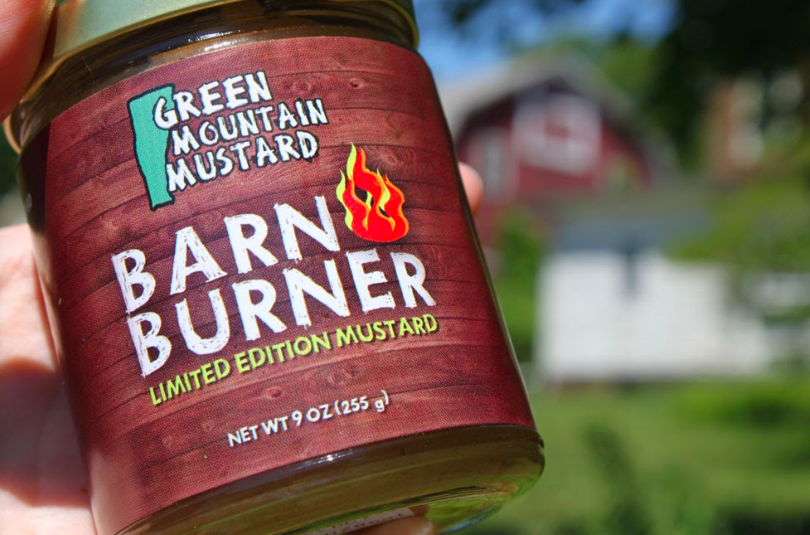
Our spicy mustard for the adventurous type.
If you’re lucky, you’ve got variety list of co-packers to choose from. If you do, narrow them down to 13 and go through this copacker evaluation process below. You won’t be wasting your time and you’ll ask all the right questions:
1. Do a phone interview first
Don’t get in your car, drive an hour, and meet with your chosen copackers quite yet. They could be the wrong fit. You wouldn’t want to waste all that money and time would you? That’s why I recommend starting with a phone interview. That way, you’re comfortable, at your desk, and have your list of questions infront of you. Oh, and speaking of questions…
2. Ask the hard questions
This is your food product we’re talking about. You don’t want to have any surprises when it comes to figuring out who to choose to produce it. That would be a lot of regret, wouldn’t it. You want to make sure you make the right selection. Ask the tough questions:
How do you process a product recall?
You don’t want any joking around or laziness when it comes to product recalls. Make sure they have a process in place that they follow and product can be recalled within an hour. Many kitchens with thirdparty certifications are usually quick because they have systems (and software) in place to help you with a recall. It’s likely it won’t happen, but you want to be sure there’s a process in place if it does.
Have you had any productions errors occur and what did you do to correct them?
This is a big one for me because of personal experiences, but it could happen to you to. Ask them if they’ve screwed up. This tells you if they’re honest and handle situations well while under pressure. It’s fine if they’re able to refocus from the error, but did they communicate with the client when it happened or did they wait until production was completed?
Will I be notified of price increases before being invoiced?
It all comes down to money. Before you’re blindsided by price increases or mysterious line items on your invoice, ask to be notified about price increases as soon as possible. That way, if you need to look for a new co-packer you can. Know what you’re being charged for and find out if your copacker is upfront about it.
Who pays for the third party inspections?
Remember all of those inspections I talked about earlier? Well, they’re expensive. And it’s important to outline who pays for the inspection. Is it the co-packer? The producer? Or can it be multiple producers? Find this out earlier rather than later as it may be a determining factor in your selection. Unplanned inspections are costly to small food companies.
Is there a contract I need to sign?
To get started with many copackers, you’ll need to sign a contract. Make sure the contract contains a nondisclosure agreement (NDA) which protects your copacker from stealing your secret recipes. The contract may only be put in the table if you’re looking for better rates and agree to produce a certain amount. That means, if you agree to produce 100 days of the year, your copacker will likely give you a price break because their facility is guaranteed to be full because of you. As always, read the contract over a few times to make sure you’re not being taken advantage of. Be cautious of upfront fees, additional charges, and what happens with breach of contract.
What other fees are associated with making my product?
Speaking of different fees, there are several and they’re all discussed at length later in the book. Make sure all of these fees are outlines for you before you sign your contract. Often these fees come as a surprise to many manufacturers and it hurts their profit margins. Even if you don’t expect to pay them when you start, expect to pay them within your first year of co-packing.
Go for a visit and bring a foodie friend.
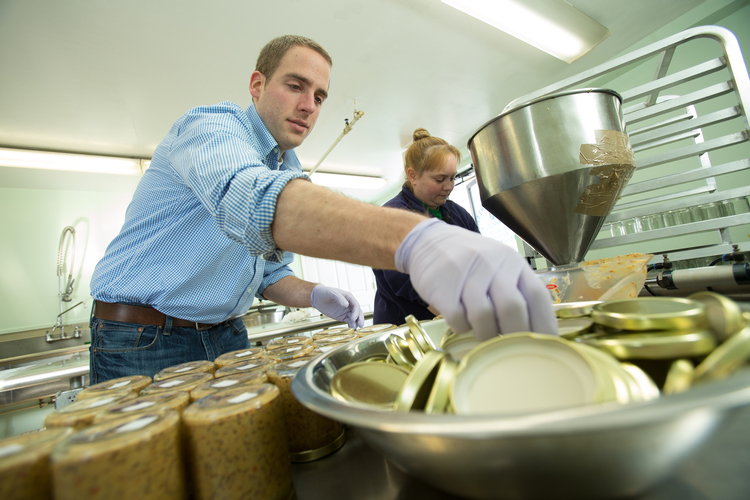
Yes… that’s really me on the production floor bottling mustard.
Just like searching for a college, you toured campus, spoke with representatives, and asked questions about campus life. Touring a copacking facility is the same experience. Except, this time, you don’t want to bring your parents along. Instead, bring another food producer or someone who knows the ins and outs of the industry. Why would you bring along someone?
Generally, food entrepreneurs have this sense about each other. They know who to trust and who not to trust.
If you know a food entrepreneur, ask them to come with you. They’ll be honest with you and the copacker. If you won’t ask the hard questions, they will. Here’s what to look for when you visit your shortlist of copackers.
What to look for when you visit:
1. Everything on pallets
Things strewn all over the floor is not up to code. All ingredients and other materials need to be kept off the floor. The easiest way for copackers to do this is use a combination of pallets and metal shelves. Kind of like Costco or BJ’s.
2. Lot tracking documents
Ask to see that your co-packer uses a lot tracking system. Whether it’s pen and paper or a large enterprise piece of software, see that lot tracking is being completed. While your copacker doesn’t have to show you another manufacturer’s documents, just have them show you the printouts they use. If they don’t participate in lot tracking, you’re going to have a tough time recalling product, should that happen.
3. HACCP Plans and Good Manufacturing Practices (GMP’s)
I know, this is the boring stuff (well, exciting to some). Make sure your copacker is HACCP certified (this includes everything from receiving ingredients to shipping finished product out of the facility) and practices good manufacturing practices. They likely do if they maintain any third-party certifications. Ask to see documentation if you don’t see clipboards around the kitchen document processes and critical control points. If you’re curious what good manufacturing practices are, take a look at this link from the FDA (it’s quite wordy).
4. Hairnets/hats and gloves
It sounds so basic. Wouldn’t all food processing facilities use hairnets and gloves? You’d think so, but some skip over the easy things that keep your food product safe. I’ve been in facilities that don’t use hairnets and gloves and I’ve also been in facilities that have all guests wear chef’s jackets, hair nets, and gloves.
Plus, they have you sanitize your shoes in a footbath as you enter the kitchen (this was a large commercial facility). Keep in mind, all facilities are different and have to abide by different regulations based on the certifications and inspections they have. Regardless a head covering and gloves are musts and this may be included in the GMP’s from above.
5. General cleanliness
Again, obvious. But, a clean kitchen means you’re witnessing a welloiled machine. The floors should be clean of debris, the sinks shiny, and the shelves organized. Ask if the kitchen is cleaned and washed down after every production. The last thing you want is remnants from another product in your product, just to push units out the door.
6. Updated equipment
Old stuff breaks. New stuff (hopefully) doesn’t. Try to find out when the equipment at your prospective copacker was brought in and when it may be replaced. Old equipment may break more easily than new equipment. And for that reason, you want updated equipment. Remember you get what you pay for, too.
7. Proper storage
If there’s anything I’ve learned, it’s that copackers never seem to have enough storage. And they charge for it if they’re tight on space (see the part about hidden expenses later in the guide). Storage is important because you want to know the copacker can handle your growth. When you order a couple hundred cases of glass, it needs a place to go. And so do all of your ingredients. Make sure your copacker has some room to spare (even if you have to pay for it).
8. Good rapport between the kitchen manager and employees
How do employees interact with each other? How do they interact with their manager? The relationship between employee and manager is crucial because you don’t want an employee sabotaging your production just because they aren’t happy with their boss. Look for open body language, laughing/joking, and employees who respect their manager.
While there’s a lot more to look for, these are the most important based on my own experience. They make a huge difference between which co-packers move to the top of the list and which fall to the bottom.
Congratulations on getting this far in the guide! You’ve come along way and a clearly serious about staring a food business so I commend you!
Now that you’ve visited a couple co-packers and seen their kitchens, it’s time to evaluate the finances of co-packing in the next section. Notably, how much is it actually going to cost to use a co-packer? We’ll explore all the costs (including the hidden cost) of working with this kind of vendor.

